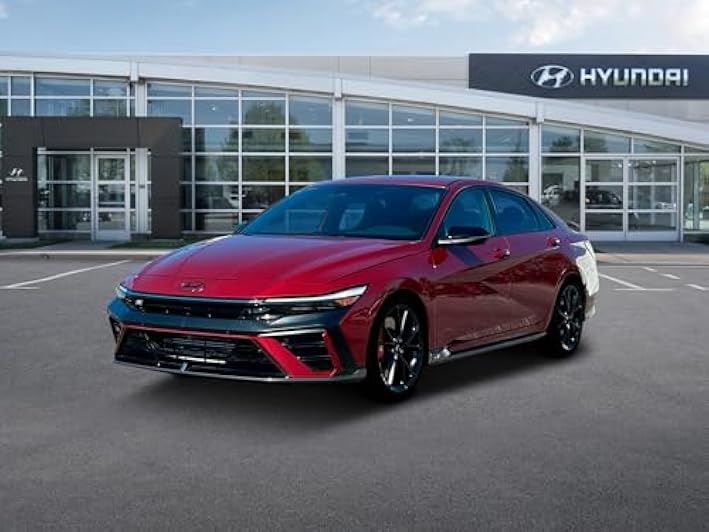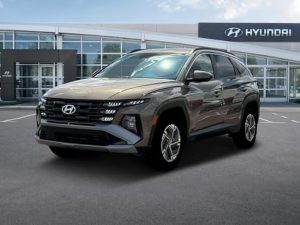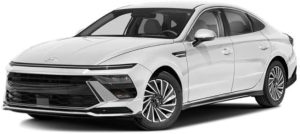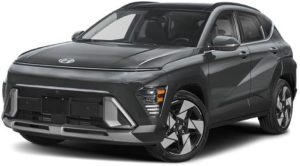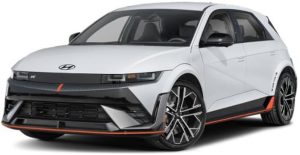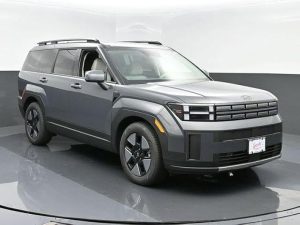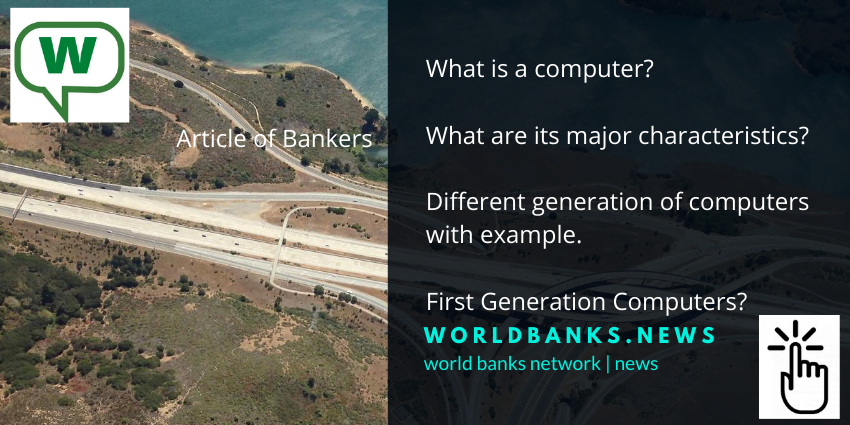What is a computer? What are its major characteristics? -Different generation of computers with example. First Generation Computers?
What is a computer? What are its major characteristics?
Definition:
The term computer has been borrowed from compute that means to calculate. A computer is an electro mechanical device which has capacity to accept, store, process and retrieve data, according to the user requirements. Technically, a computer is a programmable machine. This means it can execute a programmed list of instructions and respond to new instructions that it is given.
Characteristics of a computer:
The following are the characteristics of a typical computer:
Speed: Present day computers operate at a very high speed. A computer can perform several million instructions in one second. For example, it can add or multiply 2,000,000 numbers in a second. There are several different types of computers and they all have different speeds ranging from high to very high. The speed of computers is specified in MIP (Million instructions per second).
Accuracy: Computers perform with a very high degree of consistent accuracy. Errors may occur due to a program logic error. These are human errors. Hardware errors are usually detected by the computer system itself. The probability of computer error is small and often traceable to faulty data. Computers rarely make mistakes and can accurately perform all kinds of complex computations.
Reliability: Computer systems are particularly adept at repetitive tasks. They do not take sick days and coffee breaks and they seldom complain. Computer systems are widely accepted because of their exceptional reliability. Unlike most humans they are capable of operating under most adverse conditions for extended periods of time without showing any signal of fatigue. Computers consistently provide the same accurate results under all operating conditions.
Memory Capabilities: Computer systems have total and instant recall of data and an almost unlimited capacity to store these data. A typical mainframe computer system will have many billions of characters, thousands of graphic images, stored and available for instant recall.
Versatility: The same computer can be used for various applications. For instance, a PC can be used to prepare a letter, prepare the balance sheet of company, store a database of employee, send/receive fax message etc. For a computer to perform a new job, all it needs is a program.
Describe the features of different generation of computers with example.
First Generation Computers:
The First Generation Computers was marked by the use of vacuum tubes for the electronic components and by the use of electrostatic tubes or mercury delay lines for storage. Examples of first generation computers are EDSAC (1949), EDVAC (1951) etc., this generation lasted until the end of the 1950s and the computers in this era had their basis in wired circuitry and thermion valves. Their outstanding features were:-
Very expensive, poor reliability, slow input/output.
Quite large, generated lot of heat and required special housing.
The medium of internal storage was magnetic drum.
Punched cards and paper tapes were used for secondary storage.
Continuous maintenance is required; produces lot of heat hence requires special air conditioning.
Applications-pay roll and other single applications in large companies.
Uses batch processing technology, to process the data. Information Technology in Financial Services
Examples:
o In 1949 – at Cambridge University EDSAC (Electronic Delayed Storage Automatic Calculator was developed).
o In 1952 at Pennsylvania University, EDVAC (Electronic Discrete Variable Automatic Calculator) was developed.
o In 1951, UNIVAC-I (Universal Automatic Computer) was developed. Second Generation Computers: The second-generation computers are initially marked by either magnetic drum or magnetic core storage and later by the use of the transistor in the place of vacuum tubes.
Main features of the second-generation computers are:
Magnetic core was used as primary storage device and tape as secondary storage.
Used transistor circuits, hence the size of the computer was small compared to that of first generation computer.
Greater reliability and higher speed, when compared to that of first generation computers.
Uses high level procedural languages viz., FORTRAN (Formula Translator) 1954-57, COBOL (Common Business Oriented Language) 1957-61.
They are small, faster and required less power to operate.
Applications: Payroll, Inventory, Accounts Receivable, in large and medium sized companies: Ex: IBM 700, 1401; ATLAS; ICL 1901
Third Generation Computers (1965-1971):
The arrival of the third generation in the mid 1960’s proved to be an important milestone in the evolution of computers. The advances over the previous generations were very significant and allowed an increased number of organizations to reap the undoubted benefits which computerization could bring. The following are the features of this generation:
Further reductions in size of computer.
The cost/performance factor has improved significantly.
Increased internal core memory capacity.
Processor speeds are rated in nano seconds.
The use of high-level languages became common e.g.: COBOL, FORTRAN and PL/I.
Multiprogramming operating system was developed.
Magnetic disk was used as secondary storage.
Transistors were replaced with integrated circuits – hence increased miniaturization.
Computers were capable of performing both scientific and business tasks with high speed and reliability.
Input and Output devices are improved.
Applications: Order Processing, air line reservation, real-time inventory control etc.
Uses online, real time processing and multiprogramming operating system. Ex: IBM/360/370; NCR 395; Burroughs-B6500. Information Technology in Financial Services DAIBB
Fourth Generation Computers:
The fourth generation computers arrived in mid 1970’s. The distinguishing marks were the introduction of standard architecture, which proved greater mobility of the system. The introduction of micro technology and significant software developments, Micro technology gave rise to the development of microcomputers, work processors and intelligent terminals.
Features of this fourth generation are:
Integrated Circuits are replaced with very large-scale integrated circuits.
Semiconductors used as primary storage.
Dramatic decrease in the size of computer – development of microcomputers, personal computer.
Development of electronic spreadsheet.
Development of database management systems.
Development of distributed databases and virtual storage operating system.
Increased use of data communications and computer networks.
Increased use of Cathode Ray Tube (CRT) terminals.
The computers are compact, faster, and cheaper and are more reliable.
Application: Corporate modeling, decision support system, electronic funds transfer, electronic spread sheet, word processing and small business applications.
Future Computers (since 1985):
By the end of 1982, the computers were used every where, in automobiles, appliances, business information systems, and military hardware. With electronic technology advancing rapidly, the use of computers expected to grow in coming years. With the increased user requirements, the technology has evolved with outstanding features.
Some of the important features of the future computers are:
Future Computers use organic chips to process the data.
Both the software and hardware costs are decreasing at a high speed, so that the computers can be used by every common man (within the reach of common man).
Increased miniaturization and price/performance ratio.
The computers have high speed, and storage capacity.
Has the capacity to make decisions. (Auto decisions).
Uses non-procedural software, which is very user friendly.
Applications: Artificial Intelligence, Robots, Large Scale Corporate modeling, oil exploration, star wars system and personal robots.



